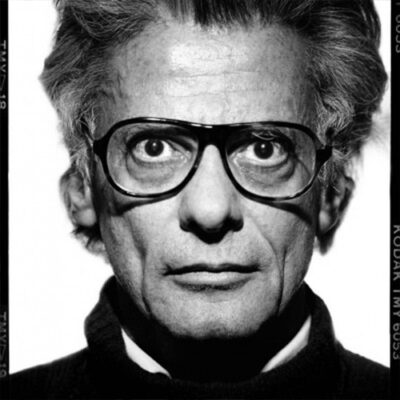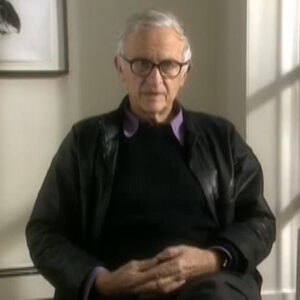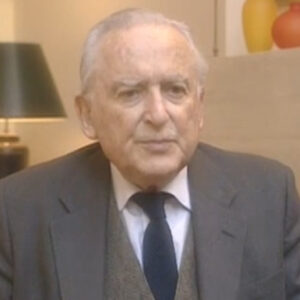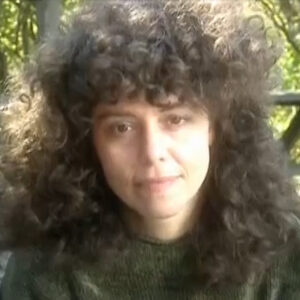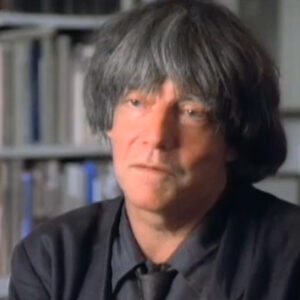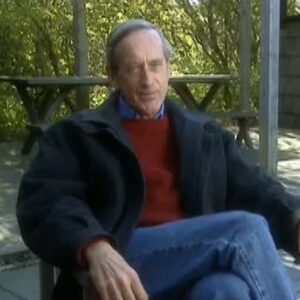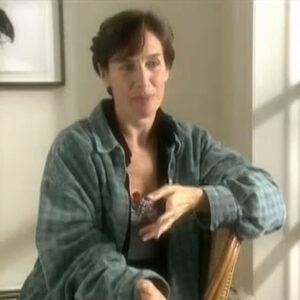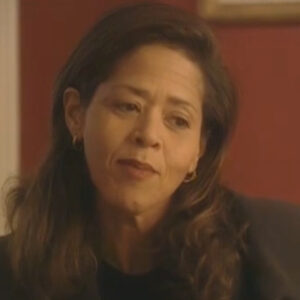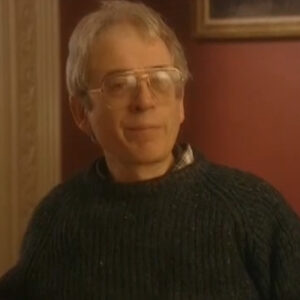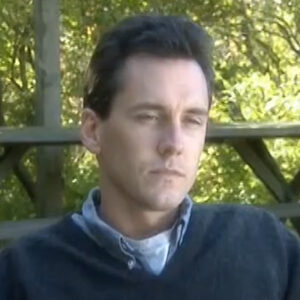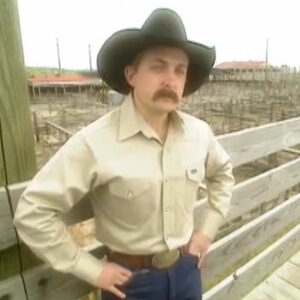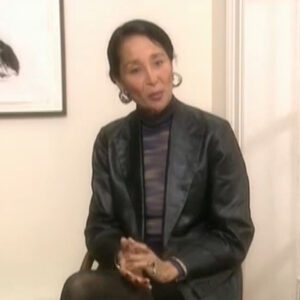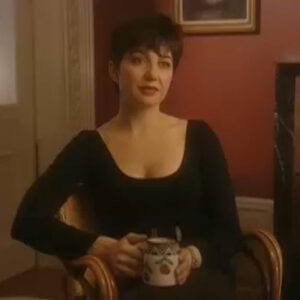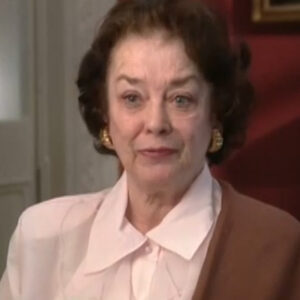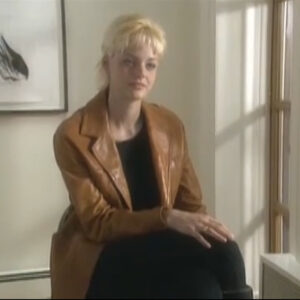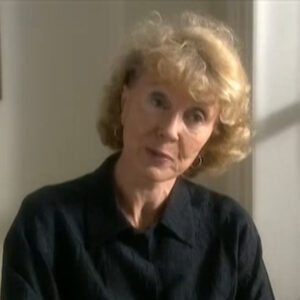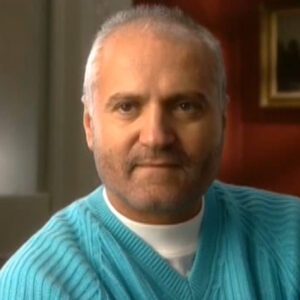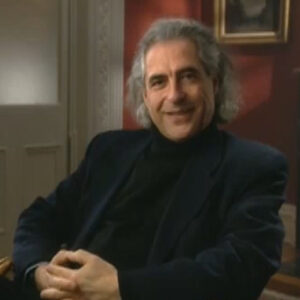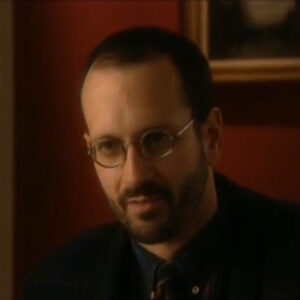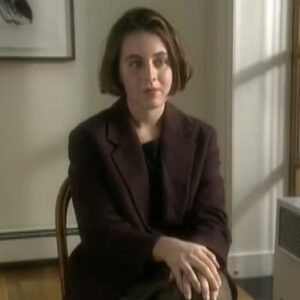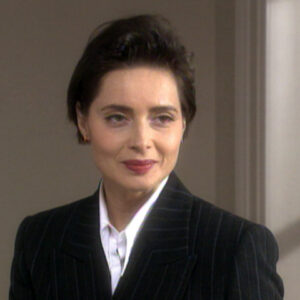Speaker My name is John Cochi. My father was Martin Cochi, and he was the first photographer to take fashion outside of the studio and shoot it in motion. So when Dick Avedon was growing up, he saw my father’s photographs in Harper’s Bazaar. Can I start over again? Because this is you.
Speaker And you wanted me to go in to before that. Yeah. OK. What?
Speaker My name is Joan Moon Cochi, and I’m the daughter of Martin Cochi, who was the first photographer to take fashion out of the studio and into the outdoors and shoot it in motion on moving living women. And he was an extraordinarily important influence on Richard Avedon, who has always given him credit for that influence. When my father came to the United States in 1933, fashion was a very rarefied thing in the magazines of that day. You saw Park Avenue, Matron’s, Palm Beach ladies dressed very beautifully, dressed very elegantly, very distant, very goddess slike, very immobile, shot in front of seemless paper or in their mansions. And it was totally removed from anybody’s well, just about everybody’s real life. My father had been a photojournalist in Europe. He started out as a sports writer and then became a sports photographer and then became a photojournalist. And so when he came here in 1933 on a trip for his German publisher, he was asked to shoot a fashion shot for Harper’s Bazaar because the editor had been told about him by a fellow Hungarian who worked for her. And he didn’t know about putting people in the studio. He didn’t know about models. I mean, I know he knew in theory, but that wasn’t the way he worked. He was a journalist. He loved women. He was a man who liked to be outside. He was a man who liked to live. And so he took the model out to the beach and asked her to run in her bathing suit and her cape and to run across the field if his camera had never been done before.
Speaker No one had ever thought of doing this. So when the photographs were published in the December issue of Harper’s Bazaar, The New World opened up.
Speaker This was an entirely new approach to fashion. And this my father became known for women leaping, women jumping, women dashing across the camera, real women coming out of the ANP standing on top of cars. And these were the photographs that Dick Avedon saw as a child. He had a windowless bedroom and he papered the walls of his bedroom with my father’s photographs because it opened up a world to him. When my father died in 1963, he had become unknown. He was penniless. He had done a little bit of work for Harper’s Bazaar the year before, but basically he had not done any fashion work in years and.
Speaker His death really meant nothing to anybody in the fashion world until Avidan wrote a piece about him that appeared in Harper’s Bazaar. That is a stunning piece of writing. He tells about how he grew up with my father’s photographs on his wall and how when he was 12 years old, he took a walk through New York with his father, sort of a regular constitutional that they took and how he saw a man photographing a model in front of a tree. The man was whispering to the model. No, he really didn’t understand what was going on. But the scene remained in his mind’s eye. And years later, he was in Paris and he saw the trees on the shores. A.D.A.
Speaker And remembered that scene in New York and.
Speaker Knew that he had seen my father photographing in front of what he had called the only tree with Proustian bark in New York City. So he wrote this beautiful, eloquent, articulate, heartfelt piece about my father that showed such incredible generosity of spirit, because it’s not often that someone who’s at the top of their profession, someone who is acknowledged as a master or someone who is very successful and who enjoys a lot of adulation, a lot of recognition gives credit to somebody else. And Dick has always said, yes, thank you. But before me, there was somebody else, there was someone who showed me a way of doing things and that was my country.
Speaker The second. Wonderful. Do it over again. B.S. sections that right. OK.
Speaker My name is Joan Moon Cochi, and I’m the daughter of Martin Moon Cochi, who was the first photographer to take fashion photography out of the studio and move it out into the real world, into the outdoors with models who ran and jumped and laughed and lived real life. When my father first took his very first fashion photograph, he had never done fashion photography, hadn’t done studio work. He was a photojournalist. And so he did what he knew. He shot a model running across the beach in her bathing suit with her cape flowing behind her. And he shot women jumping over puddles, holding up their umbrellas to shield them from the rain. And he shot women jumping up on top of cars, running down passageways, coming out of the ANP were holding onto their children with men carrying their bags. It was real world. It was real world of movement and action and fashion that related to life and that related to women that did not just exist in a rarified vacuum. And this is what Avidan saw when he was growing up. This was the photography that he put up on the wall of his bedroom. This was what inspired him. And so he began shooting women in the same way these two men who loved women began photographing. And there was this common thread that connected them, even though you would never confuse one’s photograph for the other. There was still an affinity of spirit there. There was still something that bound them together.
Speaker And then my father fell on hard times photographically. He died in 1963. He was unknown at the time he died. He had no work at the time he died. He had no money. And what he did have was Richard Avedon, who wrote a beautiful, beautiful homage to my father, a beautiful epitaph to him that was published in Harper’s Bazaar.
Speaker That is a stunning piece of writing. I mean, we think of Avidan as a masterful photographer. We think of him as an artist in this one visual field. But he is a fabulous writer who wrote touchingly about how he grew up with my father’s work, what it meant to him when he was a child, how he saw my father photographing on the streets of New York, how he didn’t even know it was my father at the time, but how the scene imprinted itself on his brain and how years later he realized that he could only have been my father. And this is a tremendous gift for one photographer to give another. And it’s a rare thing to do. When my father died, the editors at Harper’s Bazaar really didn’t know who he’d been.
Speaker They had no idea. And they read Everton’s piece and they began pulling out the archives. They began pulling out the back issues and looking at the work and saying, my God, we didn’t know.
Speaker And. I say say this was just one of the most touching gifts for someone at the height of their powers, at the height of their success, to give to someone who had meant a great, great deal to them when they were just beginning.

